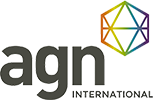Can I use Data Analytics in my Business?
 Data analytics can mean different things to different people, so it ends up being a relatively broad term used to describe anything from cross-referencing Excel spreadsheets to predicting sales trends using data from a variety of sources.
Data analytics can mean different things to different people, so it ends up being a relatively broad term used to describe anything from cross-referencing Excel spreadsheets to predicting sales trends using data from a variety of sources.
So, is data analytics something you should consider or is it something only large companies with dedicated teams of data scientists can benefit from? Every company creates data and it is surprisingly simple in a lot of cases to start organizing and using that data with a software program like Microsoft’s Power BI or Tableau. The most critical initial step is determining what data is available and making sure it is in a format that is useable, so you avoid the “garbage in garbage out” issue if you try to use poor or incomplete data. Typically, you would extract data from your systems (ERP, timekeeping, project management, etc.) and then any other data you can obtain (for example weather data if weather impacts your business, like a contractor for example) and then store this data in a data warehouse or warehouses. This helps make sure that your primary systems aren’t at risk if there is an issue of some sort and allows you to provide access to this data warehouse more easily than possibly linking directly to your primary systems.
Once the set up is done, you can get started with implementing data analytics. There are essentially four different types of analytic steps, in order from more basic to more advanced.
-
Descriptive – “what happened”
-
Diagnostic – “why did it happen”
-
Predictive – “what will happen”
-
Prescriptive – “how can we make it happen”
Descriptive analytics are the most basic and are a great place to start. You take historical data and view it in a manner that may help you identify patterns, correlations, etc. For example, say you have various products or jobs. You can view profitability by product or job by month, etc. Maybe you notice that a certain month the margin drops a noticeable amount. This is historical data that is then organized in a manner to more easily analyze and see “what happened”, so in this case that margins were lower in certain months.
Diagnostic analytics are the next step and are typically where a lot of companies can easily get to. So, you know that a certain product or job has a lower margin in a certain month but why? Is there some underlying reason? Using various techniques such as drill down, data mining, etc. you start to look for answers to why a certain product or job had that lower margin. Maybe there was a change in the price of a certain raw material used in certain products and that impacted the margin. Maybe there is a pattern with supplier quality issues. Maybe the weather was poor where the job was located and that resulted in overtime, reducing the margin.
Predictive analytics then continue to build off the previous two steps. If you know what happened and why it happened, you can start to use data to predict what will happen. This step will involve some type of machine learning algorithms that analyze the data looking for trends and patterns to predict future events. For example, if pricing is raised by 5% for certain products, what will happen to sales and profit? Predictive analytics will provide different outcomes with probabilities attached so you can see what might happen and how likely it is to happen.
Prescriptive analytics then takes these predicted outcomes and starts to provide suggested methods to help make them happen. For example, scheduling optimization is a good example. Based on the predicted outcomes, what is the optimal staffing for a shift or a construction project phase? Or if you want to increase overall profitability, what is an optimal mix of products and/or customers?
While predictive and prescriptive analytics seem the most intriguing, you’ve got to crawl before you run, so getting started with a descriptive and diagnostic analytics program makes sense for companies looking to incorporate some type of data analysis into their business. Those are typically easier to implement and the biggest thing with data analytics is getting started and keeping it simple enough you have an earlier return on investment. Once you get started and get familiar with what is occurring, you’ll likely be surprised at what you notice. Some of it will reaffirm what you already thought you knew, and some of it will point to issues or patterns you may not have realized existed. Or, you may notice you aren’t tracking something else that has an impact, maybe supplier quality ratings, and seeing how those items match up with patterns you may not be able to explain without tracking that data.
If you’re interested in getting started, please contact us.






